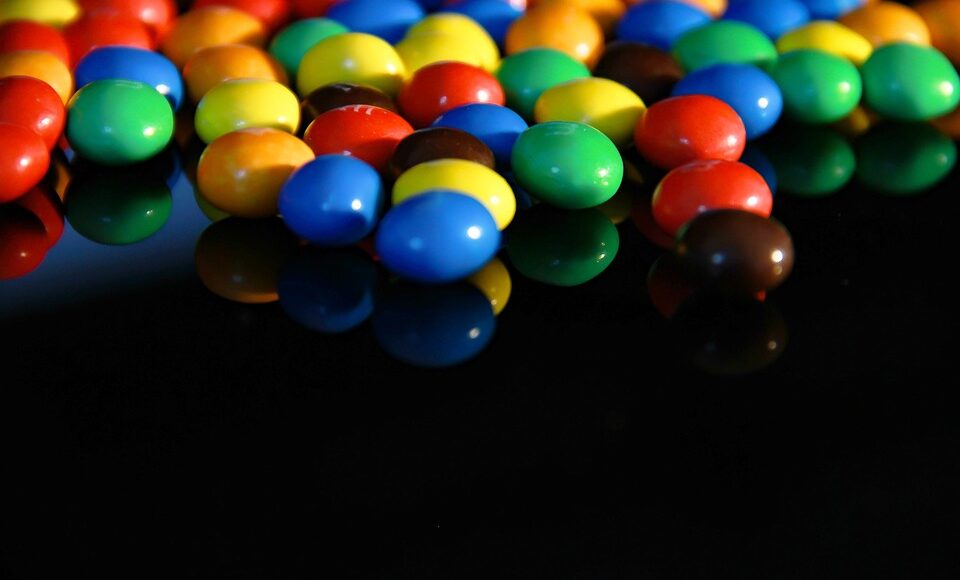Introduction
Recently, the Delhi High Court in the case of MONDELEZ INDIA FOODS PVT. LTD. AND ANR. v. NEERAJ FOOD PRODUCTS[1], revisited the test of deceptive similarity under the Trademark Law, wherein the court directed Neeraj Food Products to not use the mark “JAMES BOND” or “JAMEY BOND” for their products. Let us see in the foregoing section of this article how the court applied the test of deceptive similarity for the marks in question.
Brief Facts
The case was first brought before the court in the year 2005 by “Mondelez India Foods Pvt. Ltd. (former Cadbury India Limited)”, hereinafter “plaintiff” against “Neeraj Food Products”, hereinafter “defendant”, who then had launched a chocolate product under the mark “JAMES BOND” with an identical color scheme, layout, and arrangement as that of the plaintiffs’ “CADBURY GEMS” or “GEMS” products. The plaintiff sought a permanent injunction restraining the defendant from using the said mark in question. The plaintiff further stated that he holds copyright registrations for the artistic works in respect of character known as “GEMS BOND”, which has been used by the Plaintiffs for promotion of its ‘GEMS’ branded products. In the final hearing, in the year 2022, the court initiated an ex-parte proceeding, as the defendant was not present and their councils represented the case.
Issues before the Court
Apart from other issues, the Court dealt with the issue of deceptive similarity, specifically, “whether the trademark/label of the defendant is different and not deceptively similar to the plaintiff’s trademark/label?” while considering the existing precedents on issues of trade dress, trademark, and copyright infringement and deceptive similarity.
Rules and/or Law under Indian Trademarks Act, 1999
Section 11(1) of the Indian Trademarks Act, 1999 (hereinafter “the Act”) states relative grounds of refusal, that state that if the word/mark applied for the trademark is anyhow identical or similar to any existing trademark for the same/similar good or services and for the different goods or services, then it will not be accepted as a trademark by the registry.
However, in Narayanan on Trade Marks, the rules of comparison state, “The visual, aural and conceptual similarities of the marks must be assessed with reference to the overall impressions created by the marks bearing in mind their distinctive and dominant components.”
Thus, the court applied the rule and/or law in the present matter in light of the legislative intent as well as the precedent set by the Supreme Court and High Courts of India.
Observation of the Court
In the present matter, the court revisited the test of deceptive similarity for similar and confusing marks. The court relied on the following seminal cases decided by the Supreme Court of India:
Corn Products Refining Co. v. Shangrila Food Products Ltd[2]:
The court held that “the said question has to be approached from the point of view of a man of average intelligence and of imperfect recollection. It was observed that, to such a man, the overall structural and phonetic similarity and the similarity of the idea in the two marks is reasonably likely to cause confusion between them.”
Parle Products (P) Ltd. v. J.P. & Co., Mysore[3]:
The court held that “It is therefore clear that in order to conclude whether one mark is deceptively similar to another, the broad and essential features of the two are to be considered. They should not be placed side by side to find out if there are any differences in the design and if so, whether they are of such character as to prevent one design from being mistaken for the other. It would be enough if the impugned mark bears such an overall similarity to the registered mark as would be likely to mislead a person usually dealing with one to accept the other if offered to him.”
In light of the legal position captured above, the court observed in the present case that, “the products in question are chocolates which may be consumed by young and old alike. The ‘GEMS’ product is also usually consumed by small children, both in urban and rural areas. The test in such a matter is not that of absolute confusion. Even the likelihood of confusion is sufficient. A comparison of the Defendant’s infringing product and the packaging thereof leaves no manner of doubt that the same is a complete knock-off, of the Plaintiffs’ ‘CADBURY GEMS’. The significant fact is that these products are sold not only in bigger packs but also in smaller pillow packs, due to which the mark may not even be fully visible. Hence, the product’s get-up, layout, as also, the color combination of the packaging plays a significant role at the point of purchase. Moreover, chocolates are sold not merely in big retail stores or outlets, but also, in roadside shacks, paan shops, patri vendors, Kirana stores and stalls outside schools, etc. Thus, there is an immense likelihood of confusion, particularly considering the class of consumers that the product is targeted at, that is, children.”
Decision of the Court
The Court thus found that chocolates are the category of product, which is being consumed by both children and adults, in both urban and rural locations. Keeping this in mind, the Court ruled, “The test in such a matter is not that of absolute confusion. Even likelihood of confusion is sufficient.”
Further, the Court has also clarified that upon examination of both Plaintiff’s and Defendant’s products, there is no dispute that Defendant’s products are, “a complete knock-off of Plaintiff’s ‘CADBURY GEMS”. Furthermore, the Court found that these gems are sold in little pillow packs rather than larger packets, and therefore the mark may not be completely visible, increasing the likelihood of confusion. Finally, the Court stated that, given the large number of consumers targeted by the product, including young children, there was an “immense likelihood of confusion”.
Therefore, in view of the phonetic similarity between Plaintiff’s and Defendant’s mark, the Court granted a permanent and mandatory injunction in favor of Plaintiff. The Court also examined the issue of costs and ordered Defendant to pay a fine of Rupees 15,86,928 lakhs (approximately $18,800).
Conclusion
In this instance, the Court made it clear that the class of customers and the sort of items/products in question should be taken into consideration when applying the test of likelihood of confusion. Given that the price range of the product in question was just 1 to 5 rupees, there was an “immense likelihood of confusion” among the customers because the mark in question refers to “chocolates,” for which the consumers are of all ages. The Court made a solid finding in favor of the plaintiff as the color scheme, packaging, and trademarks that were employed were identical or misleadingly similar.
References:
- MONDELEZ INDIA FOODS PVT. LTD. AND ANR. v. NEERAJ FOOD PRODUCTS [CS (COMM) 393/2018]
- https://legacypartners.in/news-and-events/gems-v-james-bond
- https://sc-ip.in/2022/08/04/mondelez-india-foods-pvt-ltd-and-anr-v-neeraj-food-products/
[1] CS (COMM) 393/2018
[2] (1960) 1 SCR 968
[3] AIR 1972 SC 1359

